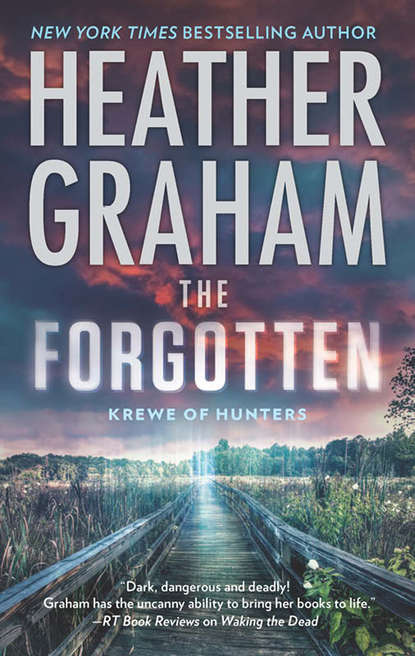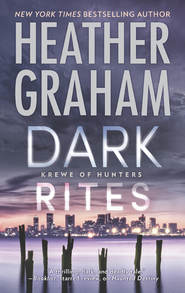По всем вопросам обращайтесь на: info@litportal.ru
(©) 2003-2024.
✖
The Forgotten
Настройки чтения
Размер шрифта
Высота строк
Поля
Lara smiled at the sight and sound of the dolphin, a beautiful female estimated to be about ten years old and named Cocoa. Rick Laramie, the head dolphin trainer, had told Lara on an earlier visit that Cocoa was performing for her and “speaking” to her simply because she had chosen to, that she’d decided she liked Lara. That was fine with Lara. She liked Cocoa, too, and was fascinated by her. Cocoa was one of the facility’s rescue dolphins. She’d been attacked by a shark and been near death when she was brought to Sea Life. Now it seemed she knew she owed her life to the facility. She was as friendly as a family pet. Today Rick was taking her for her first dolphin swim and training experience, and she was glad it was going to be with Cocoa.
Rick hadn’t shown up yet, but Lara knew she was early. She was delighted just to be there, enjoying the sunlight beneath a beautiful blue summer sky, feeling the warmth of the day heat her skin. No one at the facility was up yet, in fact. It was just after six thirty. In another half hour the cooks and cashiers who ran the small café would arrive, and a few minutes after that the rest of the staff would come wandering in. The facility opened to the public for seven hours each day, but the crux of the work here was research and education, not entertainment. They didn’t study dolphin disease and physiology, or perform necropsies or anything like that; they focused on training, learning more about dolphin habits and intelligence with each passing season.
Which, of course, was expensive. And why Grady Miller, one of the three founders of the Sea Life Center, had decided that, like other sea mammal research facilities, they would educate the public on dolphins, arranging for playtimes, dolphin swims and other trainer-conducted interactions. While Rick was the head trainer here, Grady was managing director. The facility had been a nonprofit research institute for years, and Grady was loved and respected by the dolphins as well as all of his coworkers. She’d seen him in the water with the dolphins; they had all rushed to him like giant wet puppies, eager to greet him, eager to have him stroke them along their backs and fins, eager for his kind words. He’d purchased the property and the docks from the previous owners—filmmakers who’d trained dolphins to perform for the camera—and continued working with the dolphins they’d left behind, simply loving and being fascinated by the creatures. That had been almost thirty years ago. He’d started with two partners. Willem Rodriguez had provided financing, and Peg Walton worked with him day-to-day. Peg had passed away a few years ago, and now Grady essentially ran it on his own. The facility was now far larger than when it had been founded, and it was thriving, with its research featured in the most influential scientific publications.
They were supported by people from around the world, rich and poor alike. Their contributors included people who “adopted” a dolphin for a small donation and “sustainers” who, in return for their substantial support, were allowed to see some of the research as it was being conducted and were invited to attend a picnic-style fete each year, as well as being welcomed to various small meetings where the center’s newest findings were presented. There was, in fact, a dinner planned for that evening. It would be Lara’s first chance to attend such a special occasion, because there weren’t many of them, and as a new employee she was lucky to find one happening so soon after she was hired. At Sea Life, every contributor was appreciated, and with nonprofit enterprises continually reliant on the philanthropy of others, it was important to always let all their contributors know how much they were valued. And tonight a few of their major supporters would be on hand. Lara didn’t know much about Grant Blackwood of Eden Industries or Ely Taggerly of Taggerly Pharmaceuticals. She did know that Mason Martinez, CEO of Good Health Miami, had a nationwide reputation for his healthful lifestyle clinics and the preventive medicine practiced there. She was also familiar with Sonia Larson of Sonia Fashions.
In fact, she owned a number of Sonia’s pieces, trendy business fashions that didn’t cost an arm and a leg. She was anxious to meet the woman, along with all the others, of course.
Lara’s job tonight was to seat everyone and see that they were happy with the food and everyone had a good time while the trainers and scientists talked about their research and results. It hardly seemed like work.
And then there was the day-to-day here at Sea Life. Always time to walk around the lagoons and talk to the dolphins.
Lara felt she’d truly found a haven. She loved all the dolphins—but especially Cocoa.
Cocoa was in the front left lagoon that day, her usual location, though occasionally she was shifted to a different lagoon for training purposes. There were six underwater enclosures for the dolphins at the facility, front, right and left, and then two more behind each of those, with a sandbar-like island at the rear that more or less created a back street to approach the lagoons. The last two were the largest, where the adolescent males were kept. They could be rough when they played, just like teenage boys, and since two of the females had calves that were just a few months old, they were happiest away from the antics of the “boys.” The lagoons were all connected via underwater gates so the dolphins could be moved around for training and medical purposes.
Each lagoon had a floating dock for trainers, medical personal and the visitors who were part of a swim program, as well as a floating platform farther out in the water.
Lara sat down on the dock. “Good morning, Cocoa!” she called.
The dolphin made that clicking sound again, disappeared for a minute, then came up near Lara in a magnificent leap and welcomed her with a showering spray of seawater.
Lara laughed. “Yes, yes, you’re lovely and talented, and that actually felt very good. Love the sun, but it is warm. That water felt great. This is such a beautiful day,” she said.
And it really was. Stunningly beautiful. The sun was shining, making the water sparkle. A breeze was drifting in off the bay, rustling the palms and sea grape trees that grew along the stone paths and by the docks. By afternoon it would be hot, and they might be caught by one or more of the torrential storms that could hit the area in the summer and into the fall. But right now, it was simply beautiful. The sky was a true bright blue; the water was like a sea of diamonds.
The move to Miami had been a good idea.
She was actually living in Coconut Grove, an area of the city that was historically artsy, with a “downtown” that was hopping until what seemed like all hours of the morning. It was a ten-minute hop over to the research facility, which was situated on a small private road off one of the bridges that connected the city with Miami Beach, which meant it was near other attractions, such as downtown Miami, the Art and Design District, South Beach, the Port of Miami, Jungle Island and the Children’s Museum. While the area surrounding Sea Life was busy and modern, the facility itself had an old-time charm. The foliage was a little wild and ragged, iguanas roamed freely, and birds were everywhere. The best of both worlds.
And I so desperately needed the change, she thought.
Yes—a complete change. She had even started going by her mother’s maiden name, Ainsworth. The trauma she had fled had been one thing; she was strong. The constant publicity had been another. Ironic, since media was what she had done as a congressional assistant—and was mainly what she was still doing now. Of course, her boss, Grady Miller, knew who she was and what she had fled from. He was supportive and wonderful, and she trusted him completely.
And why wouldn’t she? Grady was friends with Adam Harrison, executive director of the Krewe of Hunters, her best friend’s unit at the FBI. Without Meg Murray and her unit, Lara wouldn’t have survived.
“Hey!” Rick called to her, heading from the service building with a cooler filled with fish. “You’re here bright and early.”
“I understand that this is very special. That even employees don’t get free swims all that often,” Lara told him, grinning.
She liked Rick; he was probably about fifty, weathered from years in the sun, slim and fit. He was married to Adrianna, another of the trainers. She had actually met Adrianna first, right here, just two years ago when she had been at her previous job, doing media for then-congressman Ian Walker. Due to a series of murders in Washington, DC, with which Walker had been involved—indirectly, or so he alleged—he was no longer a congressman.
Murders—and Lara’s own kidnapping and imprisonment, naked and starving, in the dank underground of an abandoned gristmill in Gettysburg, Pennsylvania.
But she had survived, and now she was here, building a new life. Rick knew all about her past; he also knew that she’d survived mainly because of the ingenuity of a friend who worked for the FBI, and that she’d received extensive therapy since. To be honest, she hadn’t felt that she’d needed all the therapy; she’d come out of the experience grateful for her life, and furious with anyone who would commit atrocities and murder for personal gain. The henchman who had actually carried out the vile acts was, she was convinced, truly certifiably crazy, but that didn’t mean she was unhappy about the fact that he was going to rot in jail for the rest of his life, or that the woman whose manipulative will had set him on his murderous course would rot along with him.
“Well, Lara, you should definitely be in the water with these babies,” Rick said. “There’s nothing in the world like getting to know Cocoa and her buds. We bring in wounded soldiers, autistic kids—you name it. This interaction is good for whatever ails you.”
“Rick,” she told him firmly, “I’m absolutely fine, and I don’t want people tiptoeing around me. I’m here to do a bang-up job with Sea Life’s PR. Not that I’m not beyond excited to get to know Cocoa better.”
“Okay, we’ll start our training session on the platform,” he told her. “And then we’ll get in the water. No bull, though. I’ll kick you out in two seconds if I don’t think you’re going to be a good fit with the dolphins, okay?”
“Okay.”
From the platform, Rick began to teach her the hand signals that Cocoa knew. Lara dutifully imitated every sign Rick made, and Cocoa responded like a champ. She learned from Rick about the vitamins they gave to their dolphins to compensate because they didn’t hunt their fish from the wild, and how they were given freshwater, too, something they usually got from their fish—and still did—but this ensured that their intake was sufficient, and they loved it. The biggest issue was trust, Rick told her. No dolphin was forced to perform or work—ever, under any circumstances.
“How on earth do they learn what a hand signal means to begin with?” Lara asked. “I mean, it’s not like you can explain, ‘Hey, when I raise my hand like this, I want you to make that chattering noise while you back up on your flukes.’”
Rick grinned. “We use targets, and it’s a long process—except for sometimes when we work with the calves and they just follow their moms. Dolphins are social creatures, and they’re curious about us, too. They like interaction, and they love learning. When the trainer blows a whistle after a task, it’s to tell the dolphin that he, or she, did it properly. It’s called positive reinforcement, and I don’t know of any facility that uses anything else. When the dolphin hears the whistle, he knows to come to the trainer for a reward. It may be fish, like we’ve been using today. Sometimes it’s a toy and sometimes it’s a lot of stroking. Dolphins are mammals. They’re affectionate. Oddly enough, a lot like aquatic dogs, but even smarter. Smart as all get-out. I love working with them. I’d honestly rather be doing what I’m doing than be a millionaire working on Wall Street. I wake up happy every day, and I get to work in paradise, with my friends and these amazing creatures. You’re truly going to love it here.”
“I already love it,” she assured him. “I knew I would.”
She did love what she was doing. The first week she’d started, half of her media work had been planning out her own press spin, getting the media to get past her move to Miami and the Sea Life Center and concentrate on the dolphins and the work being done here. She thought she’d handled it very well. The “news” was always fickle; a high-profile celebrity had been involved in a sex scandal, a policeman in Oregon had been accused of taking bribes from prostitutes and the world had quickly begun to forget her. In the past three weeks she had been able to work with a society that arranged dolphin interactions for autistic children, adults and children with Down syndrome and an organization involved with veterans’ affairs and helping wounded servicemen and women. Writing press releases that dealt with the good things going on in the world wasn’t like working at all.
It was a bit more of a challenge to politely fend off reality-show producers or convince the rich and famous that they had to go by the same rules here as everyone else. No one was allowed to just hop in and play with the dolphins; trainers always called the shots. And, of course, no one bossed a dolphin around; if a dolphin didn’t want to play, it didn’t have to play. Each animal could escape human interaction if and when it chose to do so. There was no drama. No one interviewed anyone without the express permission of Willem Rodriguez, who had provided Grady with the financing to buy the place a quarter of a century ago. Willem had used his business savvy in the years since then to make Sea Life what it was now: an excellently run nonprofit with a top staff of trainers and veterinarians. It was one of the most important aquatic mammal centers in the States, possibly the world.
“Ready to get in the water?” Rick asked her.
“You bet!”
Lara slid in; Rick stayed on the dock.
“You’re not coming in?” she asked him.
“No, I’ve had all kinds of dorsal tows in my day. I’m going to teach you how to get one when you need one, though, whether you’re in the water or you’re on the platform, okay?”
“Okay. Thank you.”
“Swim out into the center of the lagoon,” he told her. “You’ve seen this done, so you know the hand signal. Give that signal and Cocoa will come get you. Just grasp onto her dorsal fin and go for a ride!”
Lara swam out. The day was heating up; the water was still deliciously cool. This was so entirely different from what she had left behind.
Life was good.
* * *
There was something strangely but beautifully surreal about the sight of Maria Gianni Gomez in the banyan tree.
It was almost as if she’d been posed.
Her arms were spread out almost gently, forming a casual arc over her head. Her face was turned slightly to the right.
Her eyes were open.
She was dressed in a flowing white robe. A small branch lay over her lower body, as if set there by a modest and benign hand that might have reached down with ethereal care. The great banyan with its reaching, twisting roots had grown in such a way that the center, where Maria lay, might have been scooped out to create a bed for her.
If it weren’t that death was so visible in her open eyes, she could have been a model posing for any one of the sometimes very strange commercial shoots that took place in the notoriously and historically bohemian section of Miami.











